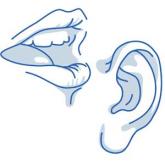Article

Narrative Medicine: A Re-emerging Philosophy of Patient Care
- Author:
- Ellen D. Mandel, DMH, MPA, MS, PA-C, RDN, CDE
The movement toward a scientific focus on data in health care was intended to reduce errors and improve care. But it also took the patient out of...
Article

Polypharmacy in the Elderly: How to Reduce Adverse Drug Events
- Author:
- Kelsey Barclay, MS, PA-C
- Amy Frasetto, MS, PA-C
- Julie Robb, MS, PA-C
- Ellen D. Mandel, DMH, MPA, MS, PA-C, RDN, CDE
Although accreditation for this CE/CME activity has expired, and the posttest is no longer available, you can still read the full article.
...
